Models of Gully Erosion by Water
Abstract
:1. Introduction
- (1)
- The dynamic model of gully formation in “real” time. Not only mechanical erosion by water on a gully bed but also erosion by thermal action of water (if frozen soil is present) and gravitation processes on the gully walls are included in this model.
- (2)
- The model of finite stable gully describes gully geometry when water flow and gravitation already do not deform the gully bed and walls.
- (3)
- The model of gully erosion potential, which takes into account the effect of all runoff from the catchment.
- (4)
- Express model of the risk of gully erosion, which takes into account only the maximum surface runoff.
2. Methodology—Model Descriptions
2.1. The Models with Gully Longitudinal Profile Calculations
2.1.1. The Dynamic Model of Gully Erosion
- (a)
- Formation of a rectangular cut in the initial slope by mechanical and thermal action of the flowing water.
- (b)
- Transformation of the rectangular cut into a trapezoidal shape by shallow landslides during the period between adjacent runoff events.
2.1.2. Stable Gully Model
- (a)
- The entire range of runoff depths is divided into N equal intervals, and probability pk of each j-th interval of runoff depth is calculated.
- (b)
- For each j-th runoff depth Mj in the middle of the j-th interval, the partial longitudinal profiles with bottom altitudes zij are calculated at each i-th point on the flowlines with Equation (17).
- (c)
- For each j-th runoff depth Mj the partial magnitude of the sediment transport rate Eij is calculated with Equation (4), written without erosion coefficient aswhere S0 is the inclination of the initial slope. Flow width is calculated with Equation (8).
- (d)
- The most probable stable gully bottom altitudes Zpi are calculated weighted with partial magnitudes of the sediment transport rate Eij and runoff depth probability densities pj
2.2. Area–Slope Approach
2.2.1. Total Erosion Potential (TEP) Model
- (a)
- The entire range of flow depths is divided into N intervals, and probability pj of each j-th interval is calculated.
- (b)
- For each j-th runoff depth Mj in the middle of the j-th interval, the partial erosion rate is calculated at each point i-th on the catchment with Equation (4).
- (c)
- Erosion potential by flows with runoff depths more than critical is calculated as the sum of partial erosion rates , weighted with runoff depth probability pj, beginning from the interval jcr with critical runoff depth Mcr:
- (d)
- To remove coefficients in Equation (29), relative erosion potential REi is estimated by dividing Epi by its maximum value ENi:
2.2.2. Express Estimation of Gully Erosion Risk
3. Results
3.1. GULTEM Model Validation and Calibration
3.2. The Comparison of GULTEM and STABGUL Models
3.3. The Comparison of the GULTEM and TEP Models
3.4. The Comparison of TEP with GER Model
4. Discussion
5. Conclusions
Funding
Conflicts of Interest
References
- Poesen, J.; Nachtergaele, J.; Verstraeten, G.; Valentin, C. Gully erosion and environmental change: Importance and research needs. Catena 2003, 50, 91–133. [Google Scholar] [CrossRef]
- Valentin, C.; Poesen, J.; Li, Y. Gully erosion: Impacts, factors and control. Catena 2005, 63, 132–153. [Google Scholar] [CrossRef]
- Bennett, S.; Wells, R. Gully erosion processes, disciplinary fragmentation, and technological innovation. Earth Surf. Process. Landf. 2019, 44, 46–53. [Google Scholar] [CrossRef] [Green Version]
- Sidorchuk, A.Y. Assessing the gully potential of a territory (a case study of central Yamal. Geogr. Nat. Resour. 2020, 41, 178–186. [Google Scholar] [CrossRef]
- Poesen, J.W.A.; Torri, D.; Vanwalleghem, T. Gully erosion: Procedures to adopt when modelling soil erosion in landscapes affected by gullying. In Handbook of Erosion Modelling; Morgan, R.P.C., Nearing, M.A., Eds.; Wiley-Blackwell: Chichester, UK, 2011; pp. 360–386. [Google Scholar] [CrossRef]
- Torri, D.; Poesen, J. A review of topographic threshold conditions for gully head development in different environments. Earth Sci. Rev. 2014, 130, 73–85. [Google Scholar] [CrossRef]
- Schumm, S.A. Geomorphic thresholds: The concept and its applications. Trans. Inst. Brit. Geogr. 1979, NS4, 485–515. [Google Scholar] [CrossRef]
- Patton, P.C.; Schumm, S.A. Gully erosion, north western Colorado: A threshold phenomenon. Geology 1975, 3, 83–90. [Google Scholar] [CrossRef]
- Desmet, P.J.; Poesen, J.; Govers, G.; Vandaele, K. Importance of slope gradient and contributing area for optimal prediction of the initiation and trajectory of ephemeral gullies. Catena 1999, 37, 377–392. [Google Scholar] [CrossRef]
- Vandekerckhove, L.; Poesen, J.; Oostwoudwijdenes, D.; Nachtergaele, J.; Kosmas, C.; Roxo, M.J.; de Figueiredo, T. Thresholds for gully initiation and sedimentation in Mediterranean Europe. Earth Surf. Process. Landf. 2000, 25, 1201–1220. [Google Scholar] [CrossRef]
- Garrett, K.K.; Wohl, E.E. Climate-invariant area–slope relations in channel heads initiated by surface runoff. Earth Surf. Process. Landf. 2017, 42, 1745–1751. [Google Scholar] [CrossRef]
- Woodward, D.E. Method to predict cropland ephemeral gully erosion. Catena 1999, 37, 393–399. [Google Scholar] [CrossRef]
- Nachtergaele, J.; Poesen, J.; Sidorchuk, A.; Torri, D. Prediction of concentrated flow width in ephemeral gully channels. Hydrol. Process. 2002, 16, 1935–1953. [Google Scholar] [CrossRef]
- Kosov, B.F.; Nikolskaya, I.I.; Zorina, Y.F. Experimental research of gullies formation. Exp. Geomorphol. 1978, 3, 113–140. (In Russian) [Google Scholar]
- Zorina, E.F. Quantitative methods of estimating of gully erosion potential. In Soil Erosion and Channel Processes (Eroziya Pochv i Ruslovye Protsessy); Chalov, R.S., Ed.; Moscow Univ. Press: Moscow, Russia, 1979; Volume 7, pp. 81–90. (In Russian) [Google Scholar]
- Sidorchuk, A.; Märker, M.; Moretti, S.; Rodolfi, G. Gully erosion modelling and landscape response in the Mbuluzi River catchment of Swaziland. Catena 2003, 50, 507–525. [Google Scholar] [CrossRef]
- Sidorchuk, A. Dynamic and static models of gully erosion. Catena 1999, 37, 401–414. [Google Scholar] [CrossRef]
- Sidorchuk, A. Gully erosion in the cold environment: Risks and hazards. Adv. Environ. Res. 2015, 44, 139–192. [Google Scholar]
- Sidorchuk, A.; Grigor’ev, V. Soil erosion on the Yamal peninsula (Russian Arctic) due to gas field exploitation. Adv. GeoEcol. 1998, 31, 805–811. [Google Scholar]
- Wolman, M.G.; Miller, J.P. Magnitude and frequency of forces in geomorphic processes. J. Geol. 1960, 68, 54–74. [Google Scholar] [CrossRef] [Green Version]
- Montgomery, D.R.; Dietrich, W.E. Landscape dissection and drainage area-slope thresholds. In Process Models and Theoretical Geomorphology; Kirby, M.J., Ed.; Wiley: New York, NY, USA, 1994; pp. 221–246. [Google Scholar]
- Istanbulluoglu, E.; Tarboton, D.G.; Pack, R.T.; Luce, C. A sediment transport model for incision of gullies on steep topography. Water Resour. Res. 2003, 39, 1103. [Google Scholar] [CrossRef]
- Horton, R.E. Erosional development of streams and their drainage basins: Hydro-physical approach to quantitative morphology. Geol. Soc. Am. Bull. 1945, 56, 275–370. [Google Scholar] [CrossRef] [Green Version]
- Harvey, M.D.; Watson, C.C.; Schumm, S.A. Gully Erosion; Tech. Note 366; U.S. Dept. of the Inter., Bur. of Land Management: Washington, DC, USA, 1985; p. 181.
- Mirtskhulava, Ts.E. Principles of Physics and Mechanics of Channel Erosion (Osnovy Fiziki i Mekhaniki Erozii Rusel); Gidrometeoizdat: Leningrad, Russia, 1988; p. 303. (In Russian) [Google Scholar]
- Sidorchuk, A. The potential of gully erosion on the Yamal peninsula, West Siberia. Sustainability 2020, 12, 260. [Google Scholar] [CrossRef] [Green Version]
- Matveeva, T.; Sidorchuk, A. Modelling of surface runoff on the Yamal peninsula, Russia, using ERA5 reanalysis. Water 2020, 12, 2099. [Google Scholar] [CrossRef]
- Schlesinger, S.; Crosbie, R.E.; Gagne, R.E.; Innis, G.S.; Lalwani, C.S.; Loch, J.; Sylvester, R.J.; Wright, R.D.; Kheir, N.; Bartos, D. Terminology for model credibility. Simulation 1979, 32, 103–104. [Google Scholar]
- Sidorchuk, A.Y.; Golosov, V.N. Erosion and sedimentation on the Russian plain, II: The history of erosion and sedimentation during the period of intensive agriculture. Hydrol. Process. 2003, 17, 3347–3358. [Google Scholar] [CrossRef]
- Van Rijn, L.C. Erodibility of mud-sand bed mixtures. J. Hydraul. Eng.-ASCE 2020, 146, 04019050. [Google Scholar] [CrossRef]
- Chow, V.T. Open-Channel Hydraulics; McGraw-Hill Book Co.: New York, NY, USA, 1959; p. 680. [Google Scholar]
- Engman, E.T. Roughness coefficients for routing surface runoff. J. Irrig. Drain. Eng.-ASCE 1986, 112, 39–53. [Google Scholar] [CrossRef]
- Statham, I. Some limitations to the application of the concept of angle of repose to natural hillslopes. Area 1975, 7, 264–268. [Google Scholar]
- Sidorchuk, A. Dynamic model of gully erosion. In Modelling Soil Erosion by Water; Boardman, J., Favis-Mortlock, D., Eds.; Springer: Berlin/Heidelberg, Germany, 1998; pp. 451–460. [Google Scholar] [CrossRef]
- Sidorchuk, A.; Schmidt, J.; Cooper, G. Variability of shallow overland flow velocity and soil aggregate transport observed with digital videography. Hydrol. Process. 2008, 22, 4035–4048. [Google Scholar] [CrossRef]
- Sidorchuk, A.; Märker, M.; Moretti, S.; Rodolfi, G. Soil erosion modelling in the Mbuluzi River catchment (Swaziland, South Africa). Part I: Modelling the dynamic evolution of gullies. Geogr. Fis. E Din. Quat. 2001, 24, 177–187. [Google Scholar]
- Kayode-Ojo, N.; Ehiorobo, J.O.; Uzoukwu, N. Modelling and prediction of gully initiation in the University of Benin using the GULTEM dynamic model. J. Energy Technol. Policy 2016, 6, 22–32. [Google Scholar]
- Wasson, R.J. Annual and decadal variation of sediment yield in Australia, and some global comparisons. In Variability in Stream Erosion and Sediment Transport; Olive, L.J., Loughran, R.J., Kesby, J.A., Eds.; IAHS Publ. N 224: Wallinford, UK, 1994; pp. 269–279. [Google Scholar]

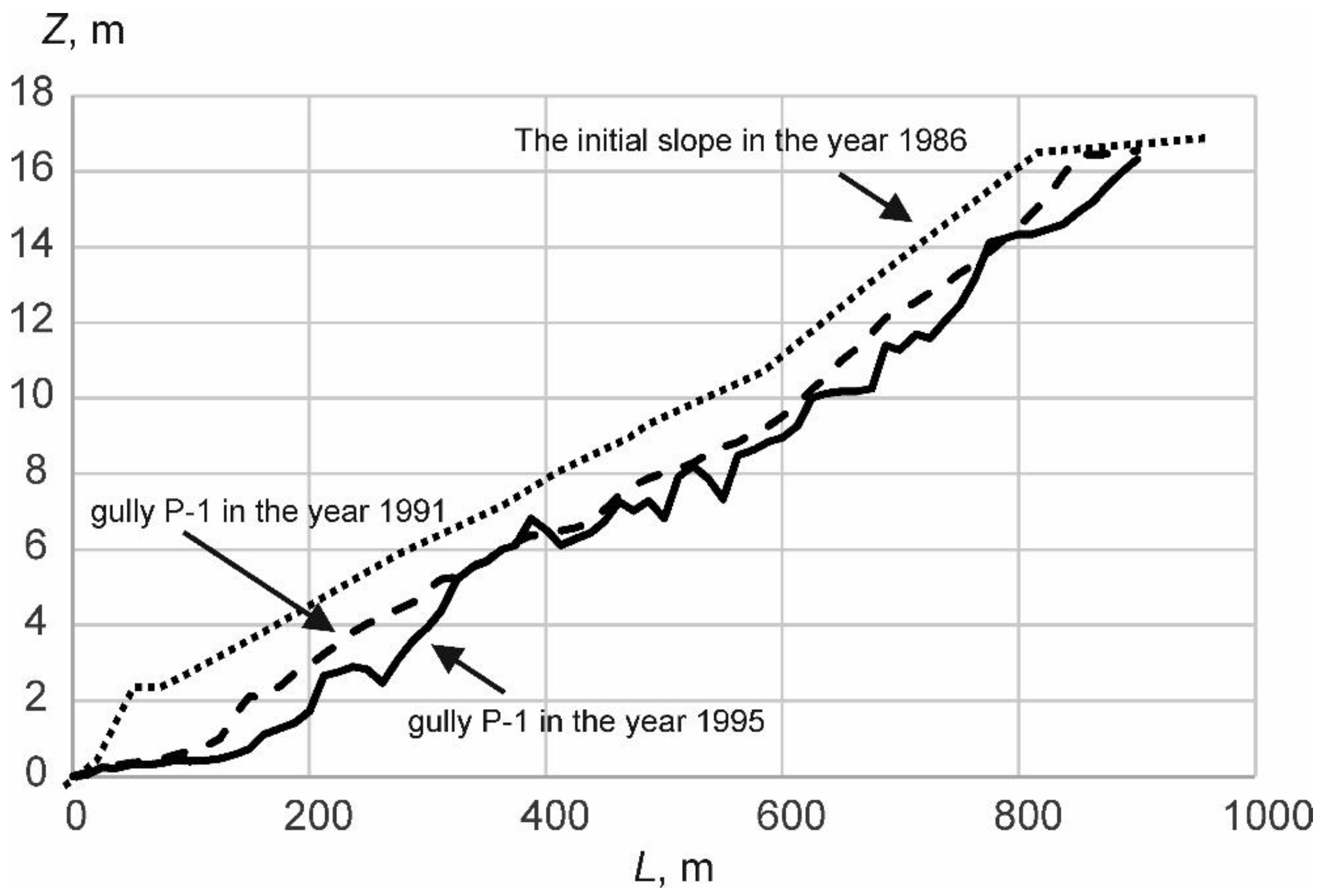
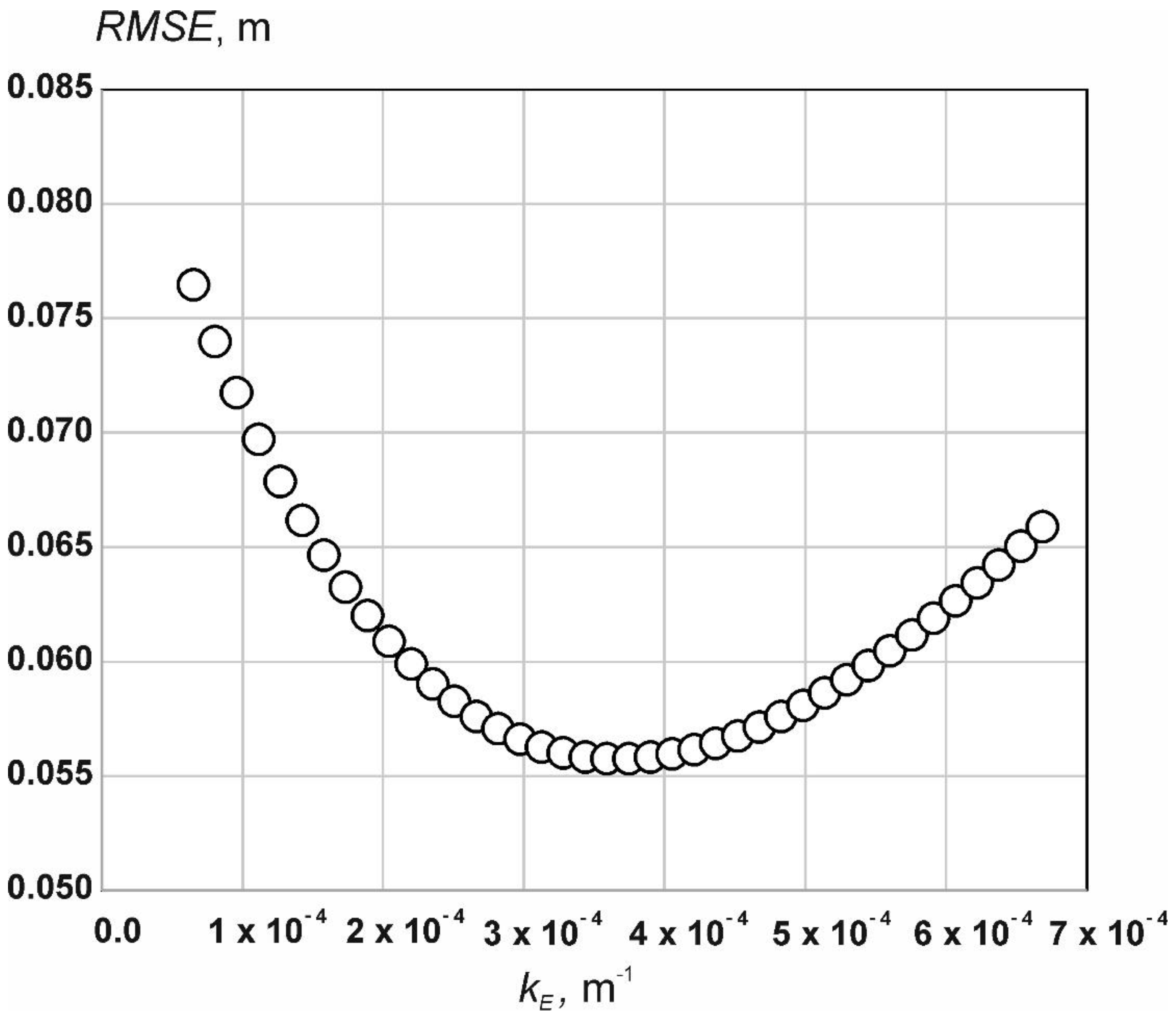


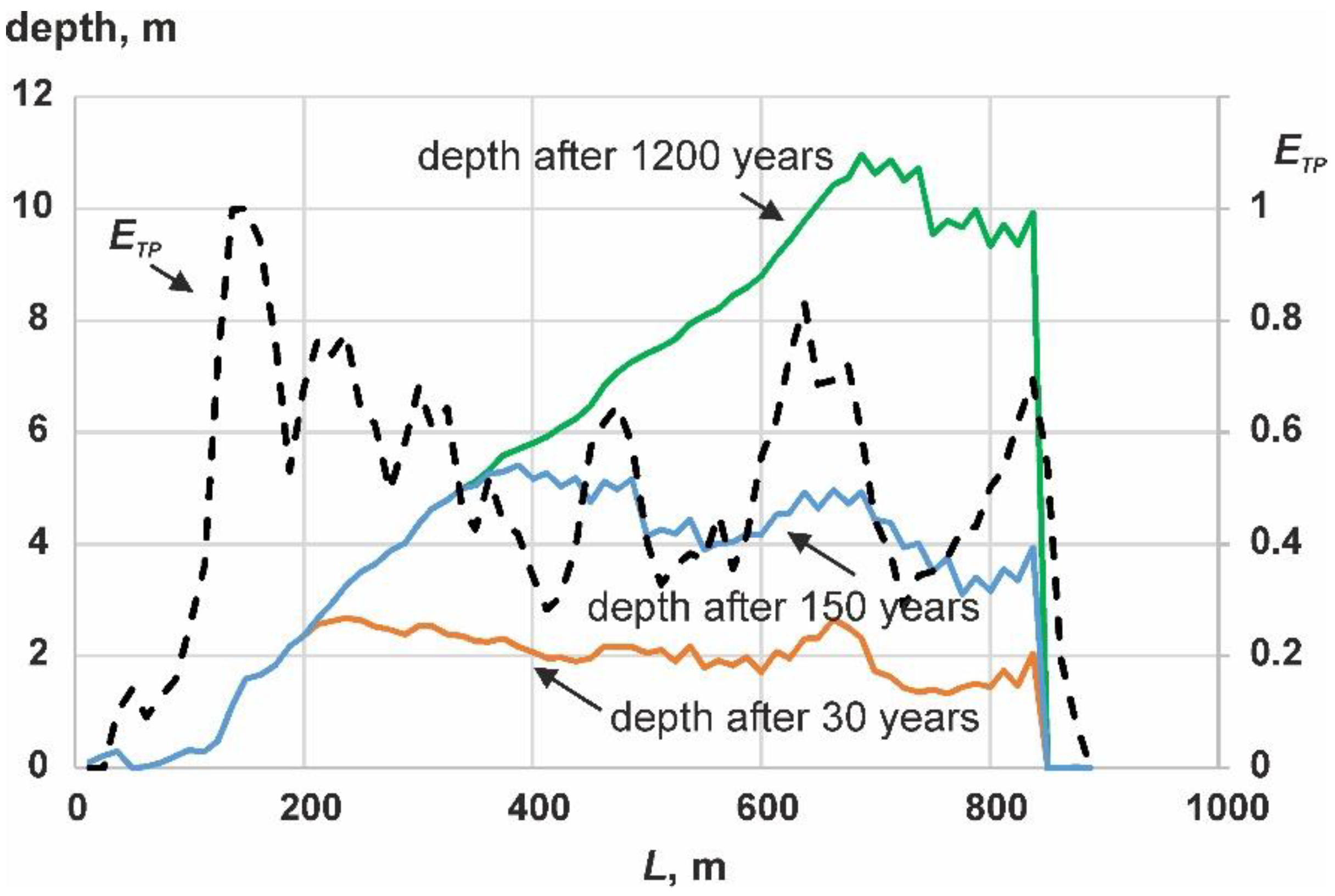
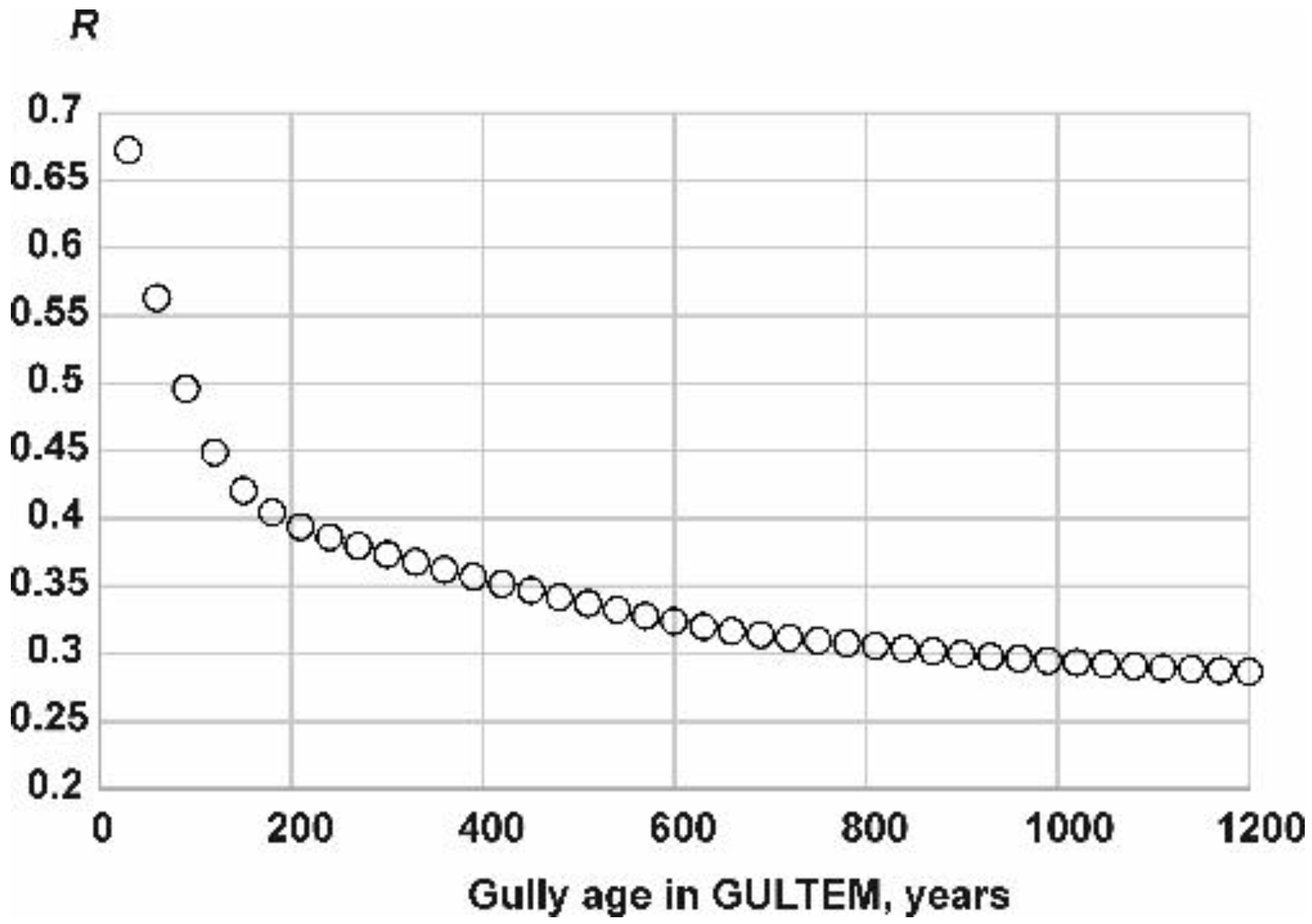
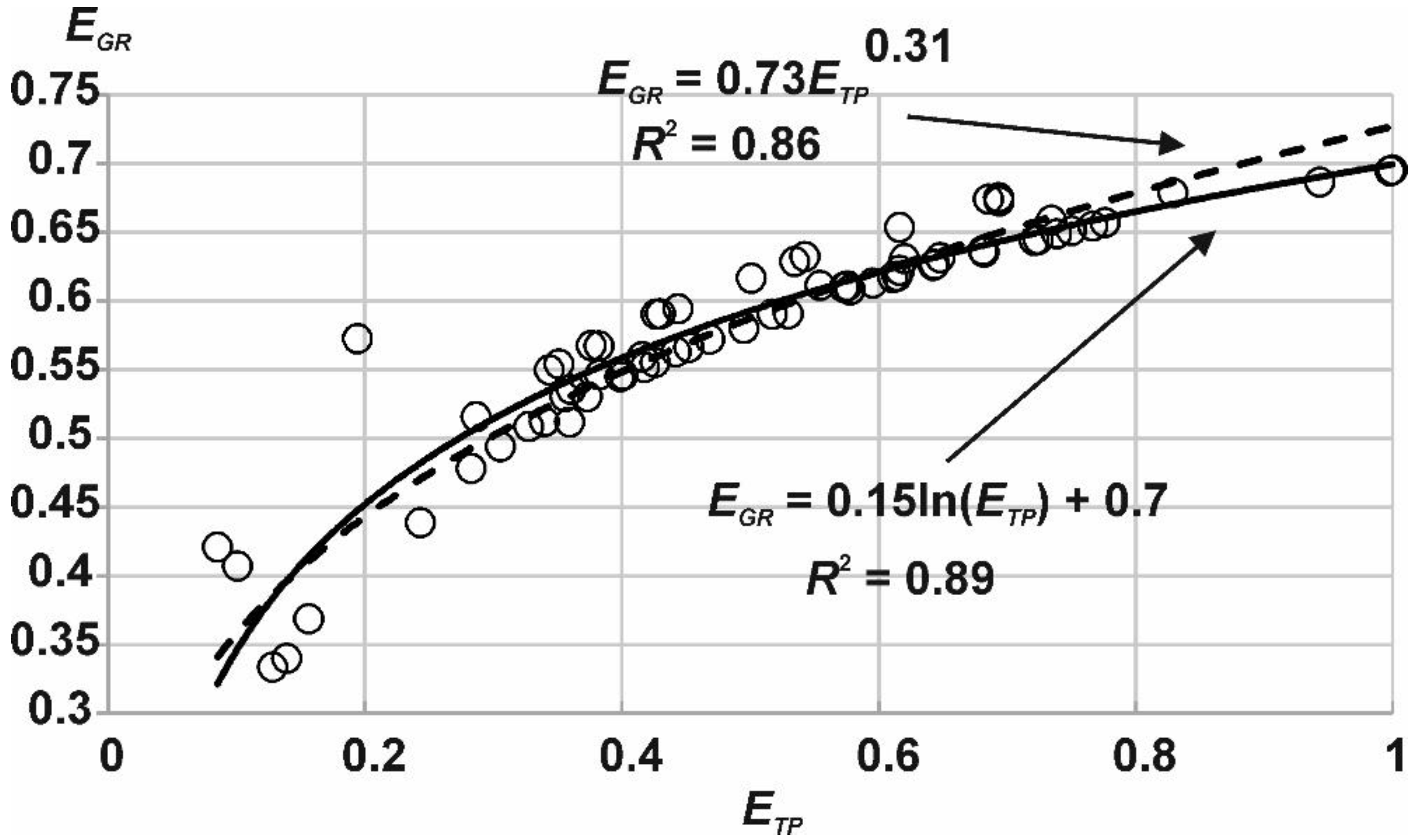
Publisher’s Note: MDPI stays neutral with regard to jurisdictional claims in published maps and institutional affiliations. |
© 2021 by the author. Licensee MDPI, Basel, Switzerland. This article is an open access article distributed under the terms and conditions of the Creative Commons Attribution (CC BY) license (https://creativecommons.org/licenses/by/4.0/).
Share and Cite
Sidorchuk, A. Models of Gully Erosion by Water. Water 2021, 13, 3293. https://doi.org/10.3390/w13223293
Sidorchuk A. Models of Gully Erosion by Water. Water. 2021; 13(22):3293. https://doi.org/10.3390/w13223293
Chicago/Turabian StyleSidorchuk, Aleksey. 2021. "Models of Gully Erosion by Water" Water 13, no. 22: 3293. https://doi.org/10.3390/w13223293





